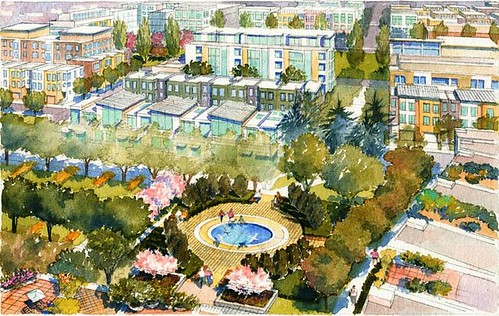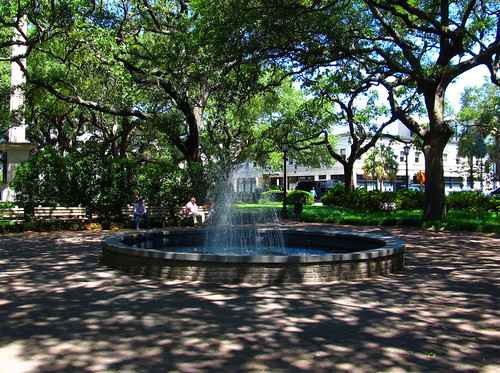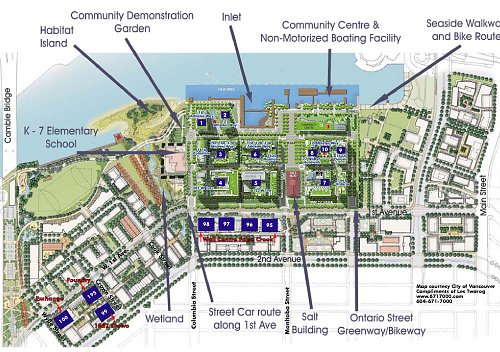Tools to help cities and towns guide green development

Posted March 7, 2012 at 1:24PM
It’s one thing for advocates and pundits like yours truly to advocate the greening of cities, towns and suburbs through environmentally responsible revitalization and land development. But it’s quite another for local governments to develop and implement policy instruments that can make that goal easier, rather than harder, to achieve. In many places, as I’ve written before, it’s not even legal to build good green development under outdated land use laws. At best, fixing that involves specialized knowledge and the application of technical detail. And, make no mistake: in our country, it’s up the locals.
Contrary to increasingly wild claims that a thoughtful, forward-looking approach to land use is controlled by a shadowy United Nations mandate, rules about development in the US are made collectively by the residents of towns, counties and cities, acting through their local elected councils and the local agencies they have constructed to handle the details. Conceptually, it’s not that different than the way that traffic laws are made or public parks administered. And, just as is the case with every other local function today, municipal agencies working on land use are strapped for budget, staff, and expertise.
A lot of towns and cities now recognize that there is merit in going greener. They now want to encourage the kind of development that will help reduce pollution and consumption of resources while at the same time saving taxpayer money and providing beautiful, walkable, convenient neighborhoods that give people choices about how to live. But this is new territory for many jurisdictions that wish to follow good, 21st-century green practices but whose basic authorities governing how to plan and build neighborhoods haven’t changed for fifty years or more. A lucky few may be eligible for limited planning grant assistance, but most must rely on models, tools, templates, and good instincts to provide help.
 Over the past decade, two great, comprehensive planning assets have been developed for municipalities to draw from in updating their development rules: form-based zoning codes, particularly the “SmartCode” model originally developed by the architecture and planning firm Duany Plater-Zyberk, and LEED for Neighborhood Development, the green rating system constructed by the US Green Building Council, NRDC, and the Congress for the New Urbanism. The SmartCode and its progeny emphasize walkability and people-centered community-building. LEED-ND, as you might expect, emphasizes those aspects of neighborhood location and design that deliver environmental performance.
Over the past decade, two great, comprehensive planning assets have been developed for municipalities to draw from in updating their development rules: form-based zoning codes, particularly the “SmartCode” model originally developed by the architecture and planning firm Duany Plater-Zyberk, and LEED for Neighborhood Development, the green rating system constructed by the US Green Building Council, NRDC, and the Congress for the New Urbanism. The SmartCode and its progeny emphasize walkability and people-centered community-building. LEED-ND, as you might expect, emphasizes those aspects of neighborhood location and design that deliver environmental performance.
The two were developed on separate tracks and, to my knowledge, have not yet been cross-indexed, which would be a heck of a great project for someone to undertake. (Give me enough grant money and I’ll do it.) But they are compatible and together form a sophisticated template to support the kind of development that will improve people’s lives while healing the planet.
Form-based codes and the SmartCode
The SmartCode has become the basis for very good zoning updates in Miami, Nashville, and elsewhere. In some jurisdictions, it has been adopted as an “overlay” upon the pre-existing zoning code for certain designated districts, where it essentially authorizes but does not mandate a new approach to community-building. Instead of restrictive regulation that separates, for example, businesses from their customers, students from their schools, or downsizing senior citizens from their adult children (and their grandchildren), it emphasizes the form and size of buildings and their relationship to the street, as well as to each other. To a larger degree than older zoning codes, it allows the market to determine which particular services or types of residences settle in which locations, as long as the building form is appropriate to the character of the neighborhood.
The nonprofit Center for Applied Transect Studies maintains a website called SmartCode Central, which can lead you to most everything you need to know about how the model works and can be applied. The Code is open-sourced and can be downloaded for free. The site describes the basics:
“The SmartCode . . . addresses all scales of planning, from the region to the community to the block and building. The template is intended for local calibration to your town or neighborhood. As a form-based code, the SmartCode keeps settlements compact and rural lands open, literally reforming the sprawling patterns of separated-use zoning . . .
“The open-source SmartCode is the most complete transect-based model code to date. CATS offers numerous other transect-based tools, including supplementary Modules designed to plug into assembled codes as needed.”
The list of communities that have adopted the SmartCode or other form-based codes is now well into the hundreds.
LEED for Neighborhood Development
If form-based codes stress walkability and the relation of buildings to streets, LEED-ND places much more emphasis on environmentally preferred development locations, and on the green performance of infrastructure and individual buildings (although it also includes walkability criteria). It contains a point system under which proposed or built projects that meet certain minimum standards can earn a green rating by accumulating points through the pursuit of various green options.
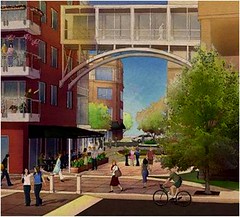 LEED-ND was originally intended not for governments but for private developers whose plans, if they met the system’s standards, might benefit from a green “stamp of approval” as they worked their way through the development entitlement process. Certification under LEED-ND is not administered by municipalities but by the US Green Building Council, an independent, nonprofit organization. LEED-ND’s standards were informed by architectural practice but ultimately based on environmental research. They are updated periodically by committees of the USGBC.
LEED-ND was originally intended not for governments but for private developers whose plans, if they met the system’s standards, might benefit from a green “stamp of approval” as they worked their way through the development entitlement process. Certification under LEED-ND is not administered by municipalities but by the US Green Building Council, an independent, nonprofit organization. LEED-ND’s standards were informed by architectural practice but ultimately based on environmental research. They are updated periodically by committees of the USGBC.
But those of us involved in the construction of LEED-ND always envisioned that the system could be highly useful to government agencies who sought language that could be adapted into incentives, codes and ordinances to improve environmental quality. And that has proved to be the case.
The Green Building Council’s Local Government Guide
Indeed, the Green Building Council has published A Local Government Guide to LEED for Neighborhood Development, which offers advice and examples on four approaches:
- Applying LEED-ND standards to a municipality’s own actions, such as planning, infrastructure design and construction, the provision of transit and public housing, and development of government-owned land;
- Aligning existing development codes and ordinances so that they are consistent with LEED-ND, and using the system’s standards to assist the development of new ones intended to further environmental objectives;
- Creating incentives, such as preferential review, density bonuses, tax credits, fee reductions, grants, and marketing assistance, for development that qualifies for certification under LEED-ND.
- Providing technical assistance, including identification of sites where development might be eligible for LEED-ND certification.
USGBC’s Guide is chock-full of examples where governments have begun doing these things. Sarasota, Florida, for example, provides fast-track permitting for LEED-ND projects; Palo Alto and Richmond, California ask applicants seeking to build developments of a certain size to complete a checklist based on LEED-ND standards; Syracuse, New York, created an arts district using LEED-ND standards.
The Local Planners Catalog of LEED-ND Measures
Perhaps most directly useful to local governments seeking to borrow from LEED-ND, however, may be a new technical publication, the Local Planners Catalog of LEED-ND Measures, a complete restatement of the system specifically for use in “adopting local sustainability policies and regulations that are derived from ND standards.” This publication is not for those planners and practitioners first becoming acquainted with the principles of green neighborhood development but, rather, for those who are looking for specific policy language to support the kind of development encouraged by LEED-ND:
“This catalog . . . reorganizes the ND rating system into a local plan/code framework more familiar to planners than the standard LEED taxonomy. The catalog also simplifies the presentation of ND standards with several credits consolidated under single measures. The objective is to make ND standards more accessible to local planners, and by doing so, better inform policy-making and standard-setting.”
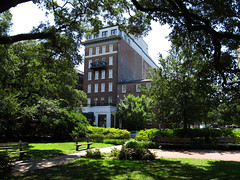 The catalog rephrases wording originally directed to developers (“Design and build the project such that . . .”) into policy-ready language (“Obtain commitments for . . .”). In addition, it for the most part does not follow the LEED-ND credit point system, but instead emphasizes “minimum requirements” and “electives,” allowing governments to determine freely which standards may be more or less appropriate locally and what kinds of benefits they might bestow on those projects that qualify.
The catalog rephrases wording originally directed to developers (“Design and build the project such that . . .”) into policy-ready language (“Obtain commitments for . . .”). In addition, it for the most part does not follow the LEED-ND credit point system, but instead emphasizes “minimum requirements” and “electives,” allowing governments to determine freely which standards may be more or less appropriate locally and what kinds of benefits they might bestow on those projects that qualify.
The catalog divides the available measures into seven categories:
- Planning process
- Land use
- Transportation
- Resource protection
- Buildings
- Site development
- Public facilities and services
The catalog was developed by Criterion Planners, a firm based in Oregon with deep experience in LEED-ND, to assist local government workshops being conducted on behalf of Smart Growth America. The workshops are supported by a “Building Blocks” program grant from US EPA’s Office of Sustainable Communities.
NRDC’s Citizen’s Guide to LEED-ND
Finally, those of us involved in developing LEED-ND from the environmental community always had an additional audience in mind: ordinary citizens concerned with development. We believed that a system of standards that could help separate green performers from pretenders would empower our constituents to determine when proposals were worthy of their support and advocacy and help them seek better development.
For these constituents, NRDC developed A Citizen’s Guide to LEED for Neighborhood Development: How to Tell if Development is Smart and Green. The Citizen’s Guide is relatively brief, colorfully illustrated, and designed to be accessible to the planning novice as well as professionals looking for a highly accessible introduction.
Following two short introductory sections (“How to Use This Guide” and “What is a Sustainable Neighborhood?”), the Guide identifies key concepts for neighborhood sustainability, referencing the LEED-ND credits and prerequisites that inform each. These follow the three major sections of the formal rating system:
- Where to Build
- What to Build
- How to Manage Environmental Impacts
It also includes a section called “How Can LEED-ND Help Improve Your Community?” that provides some creative suggestions to help users evaluate and improve development proposals, guide improvements to neighborhoods, inform community planning and zoning, and inform other policy-making. The Guide also includes a “Sustainable Neighborhood Development Checklist,” a sort of “crib sheet” condensing the system’s standards in a quick summary format that can be used in its entirety or drawn from to illuminate particular topics.
For local governments – or just about anyone – looking for a free introduction, the Citizen’s Guide is a good place to start.
Move your cursor over the images for credit information.
Kaid Benfield was a co-founder and major contributor to LEED for Neighborhood Development.
